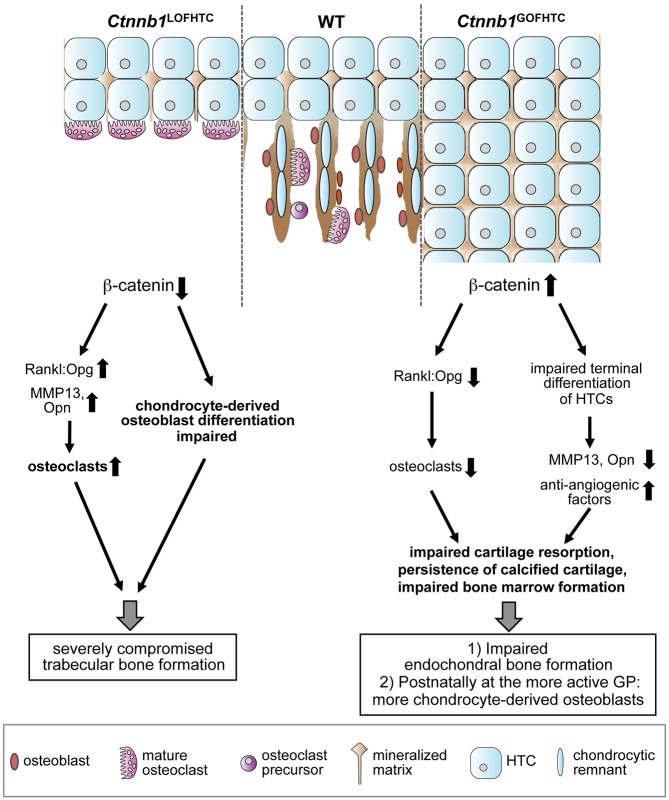Fig. 8.
Model summarizing the roles of β-catenin in late HTCs. β-catenin locally regulates the Rankl:Opg ratio controlling osteoclastogenesis and negatively influences the expression of Mmp13 and Opn. Inactivation of Ctnnb1 from late HTCs leads to an increased Rankl:Opg ratio, increased expression of Mmp13 and Opn and increased osteoclast numbers, but simultaneously affects the differentiation of osteoblasts derived from HTCs. Thus, this leads to a severe defect in trabecular bone formation. Stabilization of β-catenin results on the one hand in a decrease in the Rankl:Opg ratio and a subsequent reduction in osteoclast number and, on the other hand, affects the terminal differentiation of HTCs as reflected in the absence of Mmp13 and Opn and their overall reduced expression, whereas anti-angiogenic factors are increased in expression. Thus, endochondral bone formation is severely impaired upon stabilization of β-catenin in HTCs owing to impaired cartilage resorption and bone marrow formation. GP, growth plate; WT, wild type.

